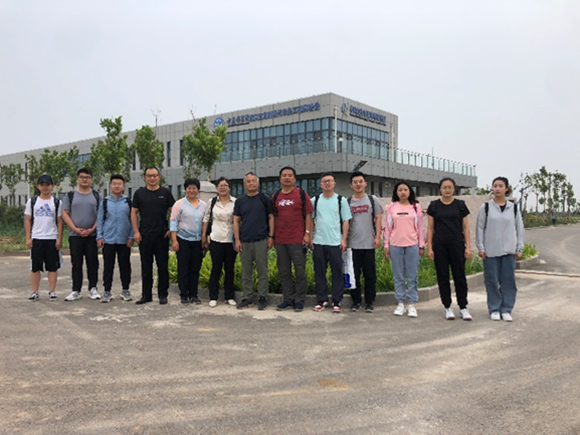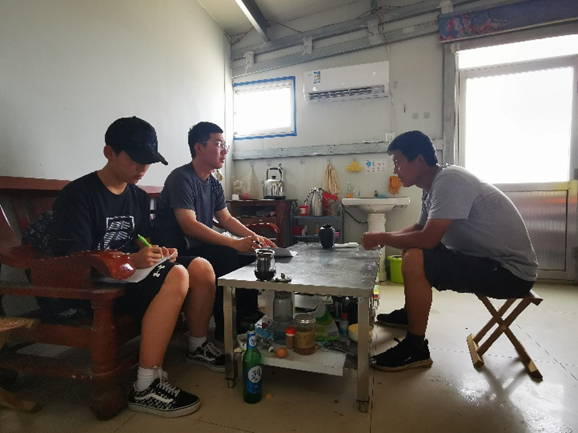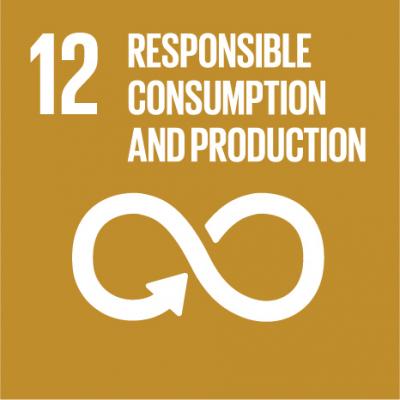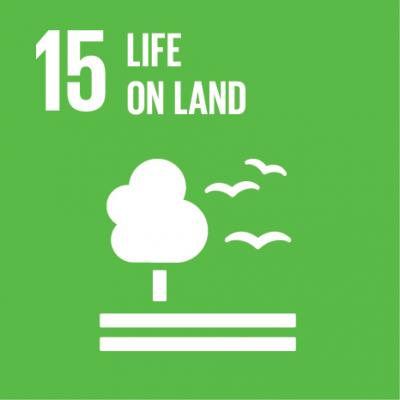As young intellectuals, we have all aspired to help change the world. We are taught new concepts and ideas to solve problems like climate change, gender inequality, and social stability. Yet we never venture through these issues physically. As I write this story, I have come to the realization that these so-called “solutions” are merely unproven hypothesis. Thus, the only reasonable thing to do in this situation is to follow a group of scientists from UNEP-International Ecosystem Management Partnership (UNEP-IEMP) and the Institute of Geographic Sciences and Natural Resources Research, Chinese Academy of Sciences, and journey into Shandong province to survey on the combination of livestock and farming, which was exactly what I did.

Group photo of our team and the interviewees
As I sat on the high-speed train, I continued to hypothesize, thinking about the issue of combining livestock and agriculture. It all seems straightforward to me in a series: the government will pass some rules and everyone will follow them; the ranch owners get money; and the environment will be protected. It’s a win-win condition. Happy of my splendid hypothesis, I continue to imagine the ten days I will spend in Dongying and Yucheng. I would walk over the lush pastures of grass while traveling through the farms listening to the difficulties of the owners and enlightening them with my knowledge.
Humans have five senses, one of which is smell. Smell is a powerful sense, as I was hit hard by the first odor of the ranches. The stench of cow feces feels like blue cheese thrown into the nasal cavity. Instead of the lush pastures of grass, I see barns built with fences filled with cows inside. The light brown cows step in their feces with the sunlight showering on their skin. The wind carries the delightful fragrance of cow feces into the nostrils, forcing me to inhale only with my mouth. A sense of joy filled me as we walk into the office, leaving the smell behind. A middle-aged man, who we later learned was forty-five, eagerly greets us with a wide grin.
Humans have five senses, one of which is hearing. The middle-aged owner speaks a dialect that was at first hard to decipher but later became understandable to me. He speaks slowly, sometimes stopping to think. He emphasizes his problems the most, that it will take him at least ten years to earn back the money invested. The banks wouldn’t lend him loans, and the government had pressed many new regulations but did not provide money to aid them. Then, we went to the most central part of the interview-----the combination of livestock and farming. This, at first, was a concept that felt new yet so obvious to me. That is combining the waste of the livestock, and using it as fertilizer for the farms, a combination made in heaven! But the owner’s answer did not go as I thought. He explains how this combination just wasn’t beneficial. His words became more powerful, telling us that the combination cost him hefty amounts of money to buy machines to process the waste so that the waste reaches the requirements. Then he gave out the processed waste for free because the farmers liked to use commercial fertilizers that were cheap and didn’t take time to fertilize, while he didn’t get any financial aid on any of these machines. As the car drives past the ranch, I think about the hypothesis I made. Maybe everything isn’t as easy as I think it is after all. It takes a lot of time for the waste to ferment and the farmers didn’t have that time. They had to put the fertilizers in when it is needed, so they choose to use cheap and fast commercial fertilizers, which is reasonable in the perspective of the farmers. This unfortunate idea continued to appear in most of the ranches I surveyed, making me question my hypothesis more and more.

Conducted field survey to local farmers
Among human’s five senses, sight is the most important sense I have, by which I can acquire information about a person at the first glimpse. As I arrive at the ranch I see a young face, a vigorous man indeed. He speaks mandarin with a light dialect, an appealing sound as I had spent the last days listening to a dialect that was like a puzzle to me. He’s about thirty years old and had gone to college, another surprise as I had encountered only ranch owners from forty to sixty in the past days. Then I start to notice that the ideas he conveyed were unique. Unlike the previous owners he talks highly of the combination of livestock and farming; he proudly speaks of him being an exemplary ranch and that he teaches the people around him about this combination as well as why it’s helpful. Awe and respect were the only two things I felt when listening to him speak. The feeling of awe stems from the fact that everything he said was the opposite of what I had heard from the other ranches. He was quite eager to process the waste of the animals and use it as it was helpful for the environment. The feeling of respect stems from how he teaches people the importance and benefits of this combination of livestock and agriculture. This young individual was also suffering problems yet he seemed to understand why the government pushed the combination and was eager to follow. As I scribble notes down, I think to myself, what a guy. It is hard for me to understand why this young man thinks this way because it feels like he supports this idea unconditionally which I just couldn’t grasp. Of course, this case is, very sadly, the only case out of the tens of ranches surveyed, but I hope more of these young individuals can enter the livestock range and eject fresh blood into a relatively old industry.
Taste is, in my opinion, the most delightful sense to feel. That’s exactly what I feel when the smooth yogurt slid down my throat sending out a soft mango aroma into my nose. I taste the yogurt as I watch the most visually impactful thing I have ever seen, a circular conveyer belt filled with cows being milked. A nice lady greets us and shows us a video of their company. We were led up to talk with a manager and it was a special experience for my ears. The numbers he said were so common, yet were also so overwhelmingly large. The company has spent one hundred million RMB on infrastructure. They have twelve thousand milk cows and are cooperating with most of the big milk companies across China. Listening to the big companies speaking felt so surreal. Just a day ago I was talking to a ranch owner and he told us how they have no power in negotiation and how they suffer deficits. Then the day after I was listening to a company worth more than a hundred million RMB talking about how they’re going to build another conveyer belt because they’re getting thousands of new cows. They had automated their whole process and had spent a hefty amount of money on processing waste. Yet, all of this didn’t touch me. Unlike the other ranches, I didn’t feel anything for this company. I didn’t feel pity nor respect for it. It just felt bland. It felt like the smooth yogurt, shockingly good at first but lacking aftertaste. This only made me worry about the future of the small-scale ranches. In contrast to the small ranches, the big companies surveyed felt so powerful and seemed to be getting larger and larger while the small ranches were suffering deficits from the unstable price of livestock. I continue to hypothesize but it doesn’t feel right. Nothing is straightforward anymore. Everything is tied together, and nobody does anything without trying to get a piece of cake. There had to be a way for the small-scale ranches to survive. I just haven’t ventured deep enough.
Innovation is a word used frequently, such as innovative ideas, innovative technology, and innovative methods. Innovation is always interesting to see when it is fascinating for me to scan a long road of greenhouses like ranches on the two sides. Arriving at a new ranch, the owner walks out of his house and starts guiding around. He explains how the land around is owned by a big company and the small ranch owners buy the ranches and land from the company. Another new mode, I think to myself but how will it work? He sells his sheep to the company and the company provides services for him such as vaccination and buys the animal fodder for them. This mode allows the ranch owners to have a stable buyer of their products without spending money on building the ranches. All they have to do is to take care of their livestock. This innovative way of livestock management is intriguing because it provides a new way for small-scale ranches to live on. As the owner continued to talk, I think about all the types of ranches I’ve been to and this type seems to be the most practical. It allows the big companies to focus on processing the livestock rather than having to go through the process of taking care of them. It also allows the individuals to continue their own businesses and to make money. The company takes the waste of the ranches and processes it, by which the waste is being used and the ranch owners don’t have to spend any money on it. Undoubtably, this seems like the best way for the small-scale ranches to go on, since the small-scale ranches just can’t live on with the pressures of unstable prices and new policies. They need someone to cooperate with to stabilize their income and acquire help and it seems that the big companies are the best choice.
Eliminating poverty and ending hunger are very important Sustainable Development Goals of the United Nations. Sustainable development of agriculture is responsible for the realization of these goals. However, we should constantly reflect on our agricultural production mode from a multi-dimensional perspective. The win-win situation between environmental protection and agricultural production is the development process and result we want.
Ten days are not short, yet also not long. Ten days of fruitful information is enough for me to think about for months. As the train slowly sped up, the view of the lush green pastures flashed away, and all that was left was the barn made of fences. Through the dark tunnels a dim light appears, dim yet slowly growing stronger.



